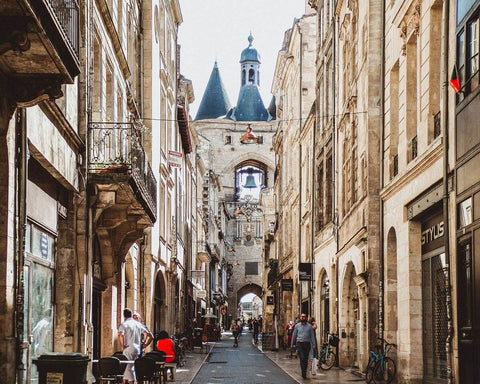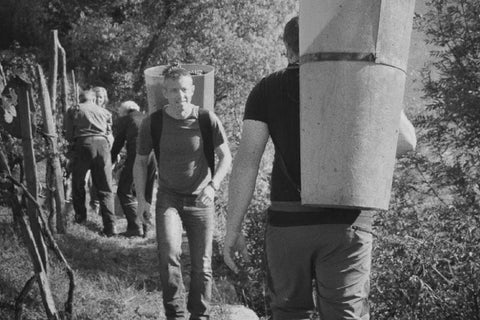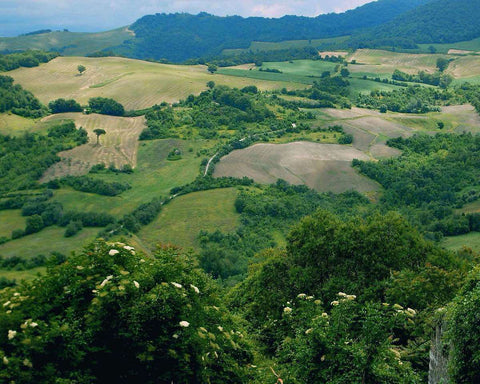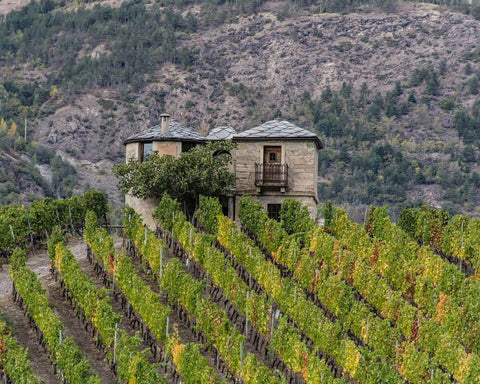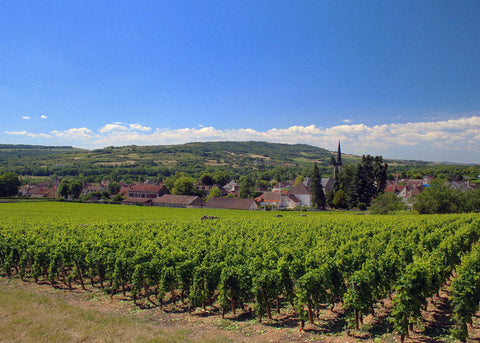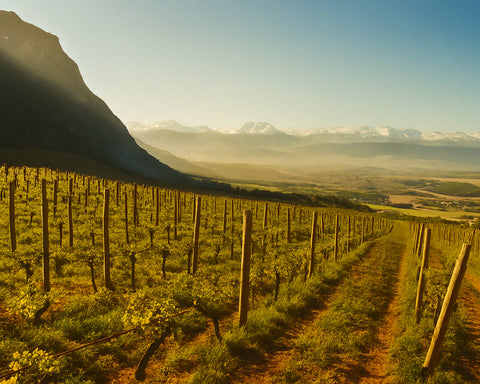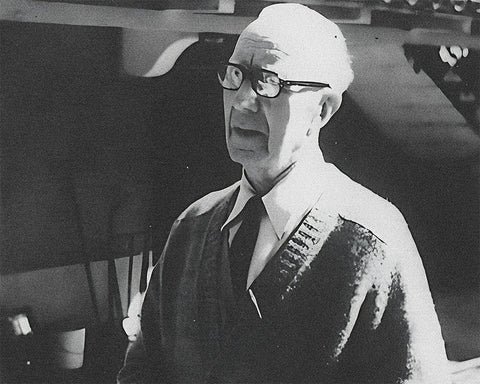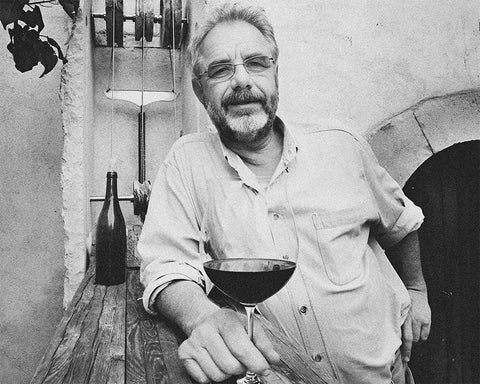The Rhône Valley, in southeastern France, borders the Alps to the east and the Massif Central to the west. The Rhône Valley is renowned for its incredibly expressive wines and hearty cuisine. In particular, the region's wines, influenced by its unique terroir and climate, are celebrated worldwide for their quality and distinctive notes. Rhône Valley's wine is one of the benchmarks, especially for grape varieties such as Syrah.
Table of Contents
History of the Rhône Valley
The Rhône Valley, strategically positioned along one of Europe's great rivers, has been a region of significant historical importance. Its history is a rich tapestry woven from the influences of ancient tribes, Romans, and various medieval and modern powers, each leaving an indelible mark on the region's culture and traditions.
The region's Roman period began in the 2nd century BCE, marking the start of the Rhône Valley's rich cultural heritage. The Romans founded several cities, including Vienne and Lyon, which became important centers of trade and culture. These ancient cities flourished, leaving behind impressive ruins and architectural wonders that continue to draw admiration today.
Following the fall of the Roman Empire, the Rhône Valley underwent various transformations under the Franks and later the Holy Roman Empire. The region's strategic location made it a crucial area for trade and military movements throughout the medieval period.
The Renaissance brought economic prosperity and cultural enrichment to the Rhône Valley. Lyon, in particular, became a hub of commerce, banking, and printing, significantly influencing the cultural and intellectual landscape of France.
The 18th and 19th centuries saw significant economic and infrastructural development in the Rhône Valley, driven by the wine trade and the industrial revolution. This period also witnessed the growth of the region's modern wine industry, with vineyards being replanted and new winemaking techniques introduced.
The 20th century brought challenges and advancements to the Rhône Valley. The region faced economic hardships during the World Wars, but its resilient spirit and cultural richness helped it navigate these difficulties. The post-World War II period saw significant development in infrastructure, tourism, and the wine industry, establishing the Rhône Valley as a prominent player on the global stage.
Terroir of the Rhône Valley
The Rhône Valley's terroir is as diverse as its history, characterized by various microclimates, soil types, and elevations. The region's varied landscape, from the mountainous areas in the north to the Mediterranean coast in the south, is crucial in shaping its unique viticultural landscape.
The region enjoys a range of climates, from the north's continental climate to the south's Mediterranean climate. This diversity, combined with the influence of the Rhône River, creates ideal conditions for grape cultivation. The soils range from granite and schist in the north to clay, limestone, and sandy soils in the south.
The Geology of the Rhône Valley
The Rhône Valley's geology is marked by its diverse soil types, providing a fertile ground for vines to thrive.
- Northern Rhône: Known for its steep, terraced vineyards and granite soils, which provide excellent drainage and mineral content, essential for growing high-quality Syrah. The region is famed for its powerful red wines.
- Southern Rhône: Characterized by a mix of clay, limestone, and sandy soils, ideal for growing a variety of grape types, including Grenache, Syrah, and Mourvèdre. This area produces both red and white wines.
The diverse terroir of the Rhône Valley allows for the cultivation of a wide range of grape varieties, each expressing the unique characteristics of its growing region.
Climate and its Influence
The Rhône Valley's climate ranges from continental in the north, characterized by hot summers and cold winters, to Mediterranean in the south, with milder winters and warm summers. The region's varied topography and proximity to the Rhône River create numerous microclimates, each contributing to the distinctiveness of the region's wines.
The Grapes of the Rhône Valley
The Rhône Valley is home to several indigenous grape varieties, each adapted to the region's unique terroir. The most notable are Syrah, Grenache, Viognier, and Mourvèdre.
Red Grape Varietals
- Syrah: The flagship red grape of the Northern Rhône, known for its deep color, high tannins, and dark fruit flavors.
- Grenache: The dominant grape of the Southern Rhône, celebrated for its plush texture, moderate tannins, and red fruit flavors.
- Mourvèdre: Often used as a blending grape, Mourvèdre adds structure, color, and complexity to Rhône blends.
- Carignan: Known for its high acidity and tannins, Carignan is often blended to add complexity to wines.
White Grape Varietals
- Viognier: Known for its aromatic intensity and rich texture, Viognier is a key grape for Northern Rhône white wines.
- Marsanne: Often blended with Roussanne, Marsanne adds richness and body to white Rhône blends.
- Roussanne: Adds aromatic complexity and acidity to white blends, often paired with Marsanne.
Top Wines of the Rhône Valley
Hermitage: One of the most famous wines from the Northern Rhône, Hermitage is celebrated for its complexity, structure, and aging potential. It is predominantly made from Syrah.
Châteauneuf-du-Pape: A prestigious wine from the Southern Rhône, Châteauneuf-du-Pape is known for its rich flavors and blend of up to 13 different grape varieties, with Grenache often playing a dominant role.
Condrieu: The quintessential white wine from the Northern Rhône, Condrieu is made exclusively from Viognier and is renowned for its aromatic intensity and rich texture.
Other Notable Wines: The Rhône Valley also produces a range of other exceptional wines, including Côte-Rôtie, known for its elegant and aromatic Syrah, and Gigondas, valued for its robust red blends dominated by Grenache.
Cuisine and Typical Products of the Rhône Valley
The Rhône Valley's cuisine reflects the region's diverse cultural influences and abundant natural resources. The cuisine is renowned for its bold flavors, fresh ingredients, and innovative use of meats, cheeses, and vegetables, making it one of France's most distinctive regional cuisines.
Meat plays a central role in the Rhône Valley's cooking, with dishes like "Daube" (a beef stew with red wine) and "Gratin Dauphinois" (a creamy potato dish) exemplifying the region's culinary creativity. The fertile land also yields various fruits, vegetables, and grains, integral to many traditional dishes.
Among the region's most prized products are its cheeses, particularly "Saint-Marcellin" and "Picodon," and its sausages, such as "Saucisson de Lyon." These ingredients are used in various dishes, from savory to sweet, showcasing the versatility and richness of the Rhône Valley's produce.
Rhône Valley Antipasti
In the Rhône Valley, a meal often begins with a selection of antipasti, highlighting the region's diverse flavors. A typical antipasti spread might include:
- Charcuterie: A selection of cured meats, including saucisson and pâté.
- Cheese Platter: Featuring local cheeses like Saint-Marcellin and Picodon.
- Salade Lyonnaise: A salad with frisée, lardons, and a poached egg.
- Pissaladière: A savory tart topped with onions, olives, and anchovies.
Rhône Valley First Courses
The first course in a Rhône Valley meal often features hearty soups, salads, or pasta dishes, showcasing the region's grains and vegetables.
- Soupe à l'Oignon: A classic French onion soup with melted cheese on top.
- Salade de Lentilles: A lentil salad with vegetables and vinaigrette.
- Ravioles du Dauphiné: Small pasta filled with cheese and herbs.
- Gratin Dauphinois: Thinly sliced potatoes baked in cream and garlic.
Rhône Valley Second Courses
The Rhône Valley's second courses often highlight the region's high-quality meats and robust flavors.
- Daube: A slow-cooked beef stew with red wine, vegetables, and herbs.
- Poulet de Bresse: A roasted chicken from the Bresse region, known for its tender meat.
- Gigot d'Agneau: Roast leg of lamb with garlic and rosemary.
- Cervelle de Canut: A fresh cheese spread flavored with herbs and garlic.
Rhône Valley Side Dishes
The Rhône Valley cuisine celebrates vegetables, with many side dishes highlighting the region's produce.
- Gratin Dauphinois: A creamy potato gratin with garlic and cream.
- Ratatouille: A vegetable medley of eggplant, zucchini, bell peppers, and tomatoes.
- Haricots Verts: French green beans sautéed with butter and shallots.
Rhône Valley Cheeses
The Rhône Valley produces a variety of cheeses, reflecting the region's agricultural diversity.
- Saint-Marcellin: A soft cheese with a creamy texture and mild flavor.
- Picodon: A small, round goat cheese with a strong flavor.
- Bleu du Vercors-Sassenage: A blue cheese with a creamy texture and mild flavor.
- Rigotte de Condrieu: A small goat cheese with a delicate flavor.
Rhône Valley Dessert
Rhône Valley desserts often feature nuts, dried fruits, and local wines, creating a range of sweet treats.
- Tarte Tatin: An upside-down caramelized apple tart.
- Nougat de Montélimar: A sweet confection made with honey, almonds, and pistachios.
- Bugnes Lyonnaises: Light, airy pastries dusted with powdered sugar.
- Canelé: A small pastry with a caramelized crust and tender center flavored with rum and vanilla.
Typical Products of the Rhône Valley
The Rhône Valley's cuisine is grounded in high-quality local products, many of which have achieved protected status, ensuring their authenticity and traditional production methods.
Charcuterie
Charcuterie from the Rhône Valley, including saucisson and pâté, is celebrated for its rich flavor and traditional production methods, symbolizing the region's culinary excellence.
Cheeses
The region's cheeses, such as Saint-Marcellin and Picodon, are known for their distinct flavors and high quality, reflecting the Rhône Valley's rich dairy tradition.
Nougat de Montélimar
Nougat de Montélimar, made with honey, almonds, and pistachios, is a beloved sweet treat from the region, symbolizing the Rhône Valley's tradition of confectionery excellence.
Crème de Cassis
Crème de Cassis, a blackcurrant liqueur, is a renowned product of the Rhône Valley, often used in cocktails and desserts, reflecting the region's rich tradition of fruit liqueurs.
More on the Rhône Valley's History
- Ancient Foundations
- Roman and Medieval Periods
- Renaissance Flourish
- Modern Unification
- Rhône Valley Today
Ancient Foundations
The Rhône Valley's history dates back to ancient times, with evidence of human settlements from the Upper Paleolithic period. The region's strategic position attracted ancient peoples, including the Celts and Romans, who significantly influenced its culture and development.
Roman and Medieval Periods
The Roman period, starting in the 2nd century BCE, saw the Rhône Valley become a center of Roman civilization, with important cities like Vienne and Lyon flourishing. The medieval period brought the rise of powerful city-states and communes, contributing to the region's cultural and intellectual life.
Renaissance Flourish
The Renaissance marked a period of artistic and cultural flourishing for the Rhône Valley. The region saw the patronage of artists and scholars, leaving a rich legacy of Renaissance art and architecture. Lyon, in particular, became a hub of commerce, banking, and printing, significantly influencing the cultural and intellectual landscape of France.
Modern Unification
The 19th century was marked by modernization and economic development, with significant infrastructure, industry, and agriculture advancements. The Rhône Valley played a key role in France's industrial revolution, contributing to its growth as a major European region.
Rhône Valley Today
Today, the Rhône Valley is a vibrant region known for its diverse culture and stunning landscapes. Its economy hinges on agriculture, industry, tourism, and a dynamic technology sector.

